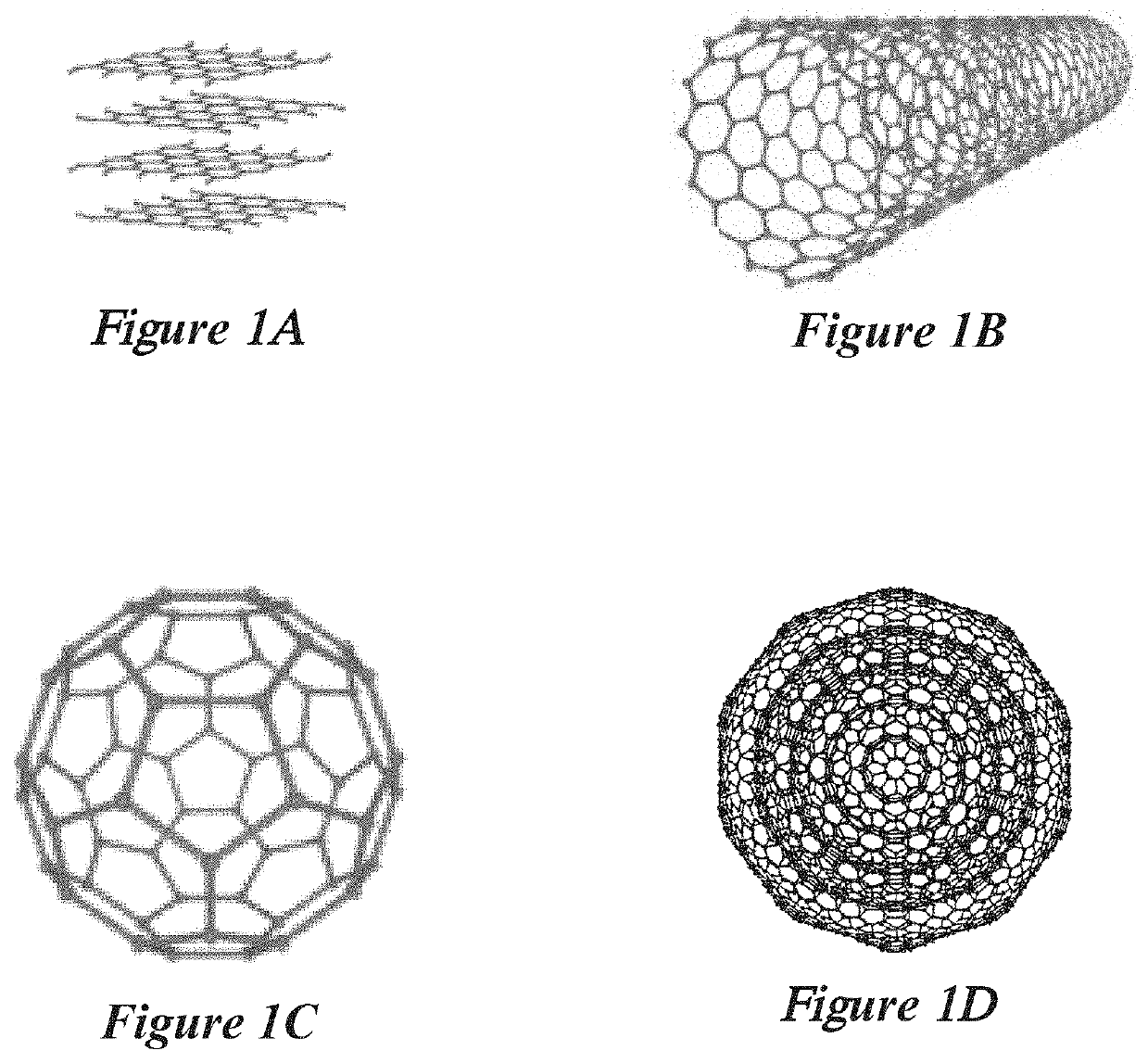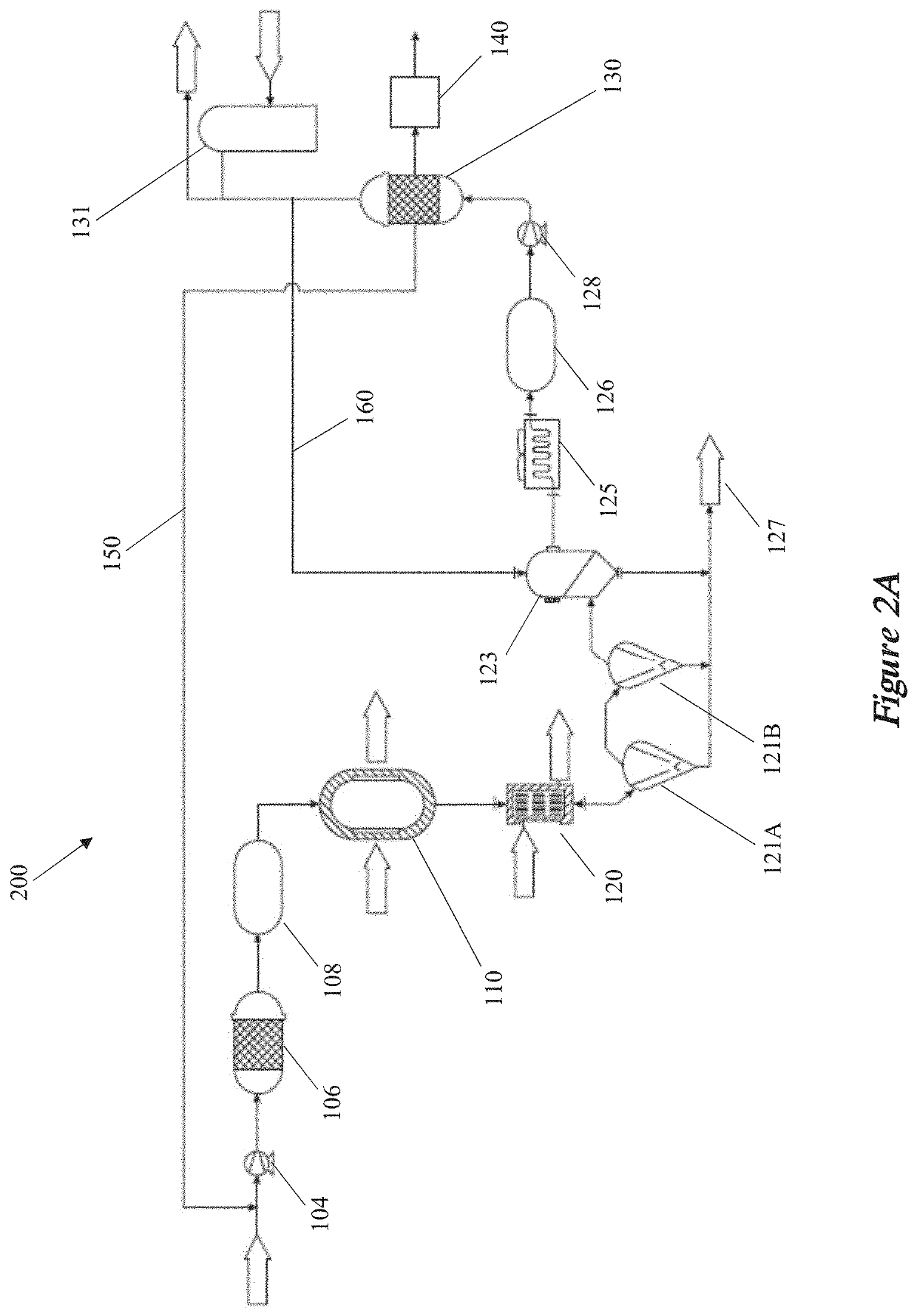Microwave reactor system enclosing a self-igniting plasma
- Summary
- Abstract
- Description
- Claims
- Application Information
AI Technical Summary
Benefits of technology
Problems solved by technology
Method used
Image
Examples
example 1
Chemical Processing System Gas-Solid Separation System
[0186]In this first example, carbon particles and aggregates containing graphite and graphene were generated using a microwave plasma reactor system, described in implementations above. The microwave plasma reactor in this example had a main body made from stainless steel with a quartz inner wall material. However, the quartz inner wall material is not needed in all cases, and similar carbon materials can be produced in reactors not containing quartz in or adjacent to the reaction zone. The reaction zone volume was approximately 45 cm3. The precursor material was methane and was optionally mixed with a supply gas (such as argon). The flow rate of methane was from 1 to 100 L / min, and the flow rate of the supply gas was from 0 to 100 L / min. With those flow rates and the tool geometry, the residence time of the gas in the reaction chamber was from approximately 0.001 second to approximately 2.0 seconds, and the carbon particle produ...
example 2
Chemical Processing System Gas-Solid Separation System
[0197]In this second example, carbon particles and aggregates containing graphite, graphene and amorphous carbon were generated using a microwave plasma reactor system as described in Example 1. The precursor material contained methane, or isopropyl alcohol (IPA), or ethanol, or a condensed hydrocarbon (such as hexane). The carbon-containing precursors were optionally mixed with a supply gas (such as argon). When gaseous methane was used, the flow rate of methane was from 1 to 100 L / min, and the flow rate of the supply gas was from 0 to 100 L / min. When the precursor material was a liquid mixture of IPA and ethanol, the flow rate of the liquid mixture was from 0.1 to 100 mL / min. In some other cases, a condensed hydrocarbon was used, and the flow rate of the hydrocarbon was approximately 3 L / min. With those flow rates and the tool geometry, the residence time of the gas in the reaction chamber was from approximately 0.001 second to...
PUM
| Property | Measurement | Unit |
|---|---|---|
| Temperature | aaaaa | aaaaa |
| Length | aaaaa | aaaaa |
| Angle | aaaaa | aaaaa |
Abstract
Description
Claims
Application Information
 Login to View More
Login to View More - R&D
- Intellectual Property
- Life Sciences
- Materials
- Tech Scout
- Unparalleled Data Quality
- Higher Quality Content
- 60% Fewer Hallucinations
Browse by: Latest US Patents, China's latest patents, Technical Efficacy Thesaurus, Application Domain, Technology Topic, Popular Technical Reports.
© 2025 PatSnap. All rights reserved.Legal|Privacy policy|Modern Slavery Act Transparency Statement|Sitemap|About US| Contact US: help@patsnap.com



